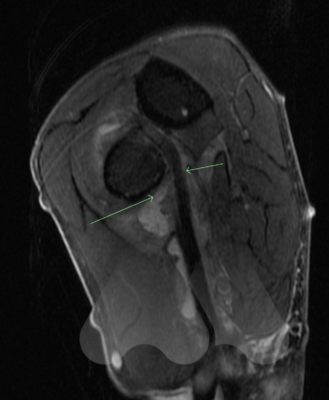What is a distal biceps tear?
Acute distal biceps tears often occur in men over the age of 40 years of age due to a forced extension of a bent elbow, such as trying to catch a falling heavy object. Patients often feel a pop in the elbow accompanied by pain and bruising in the upper arm close to the elbow. A bunching of the muscle and loss of the normal muscle contour compared to the normal side can sometimes be seen. These symptoms occur due to the tear of the biceps tendon from the forearm bone of the radius as it attaches past the elbow. Contrary to popular belief, the biceps main role is to rotate the forearm and not to bend the elbow. If left untreated, the tendon can retract into the upper arm and cause persistent weakness in the arm such as using a screwdriver or hammer and early fatigue when carrying heavy loads. Research has shown the loss of strength of 25-40% for rotation of the forearm (supination) and only 12% loss of strength in elbow flexion.
How should it be treated?
Most distal biceps tears in health active individuals should be repaired by surgery early to prevent long term problems with weakness in the arm. Most tears can be repaired directly down to bone when treated within 2-4 weeks by way of a general anaesthetic and single incision in the forearm as a day case operation. If the tendon pulls back into the upper arm and left untreated for > 4 weeks, the tendon cannot be repaired directly to bone and will likely need a more complex procedure to reconstruct the tendon using donor tissue. The results of primary repair are mostly better than reconstruction.


What to expect following surgery?
- General anaesthetic
- Day surgery
- Bandage and sling 2 weeks
As a guide, you can expect the following time frames for Early movement Day 1
Restriction in weight bearing 6 weeks
What are the risks of surgery?
- Nerve injury – Injury to the skin nerves that supply sensation to the outer part of the forearm and back of the thumb is seen in 12% of cases but often fully recovers within a few months. In rare situations, an injury to the nerves that supply the muscles that lift the thumb and fingers can be injured, causing weakness.
- Extra bone formation (Heterotopic ossification) – Seen in 3% of cases and can restrict rotation of the forearm.
- Stiffness of the elbow 2%
- Re-rupture 2%
- Infection 1%
Return to activity
As a general guide, you can expect the following times for return to activity:
Driving: 2 weeks
Light household duties: 2 weeks
Swimming: 6 weeks
Racquet and contact sports: 3 months
Manual labour: 3 months


